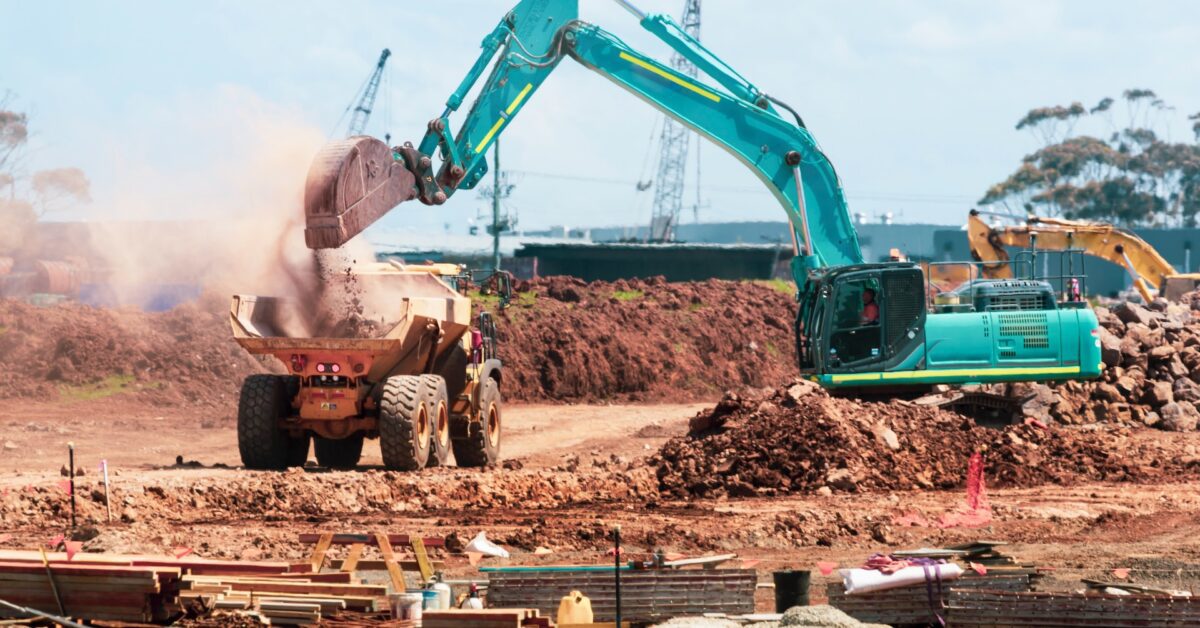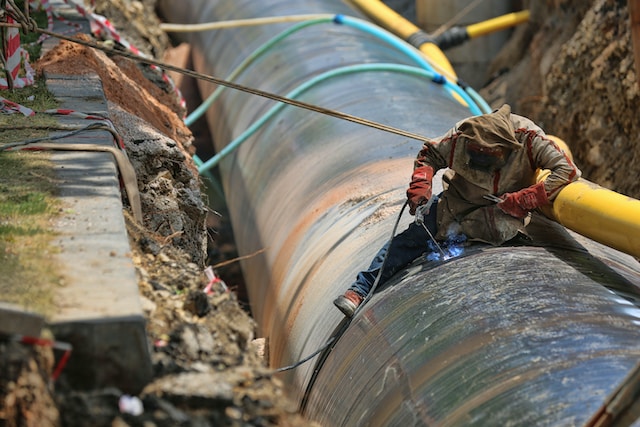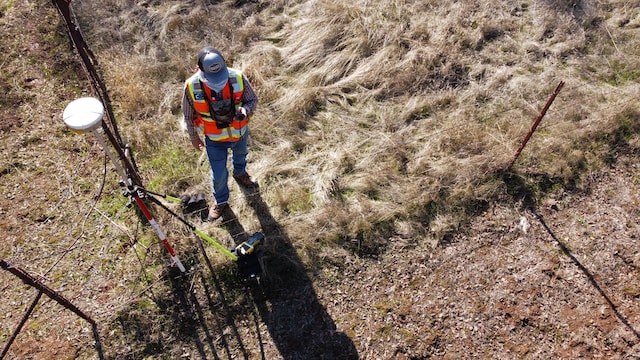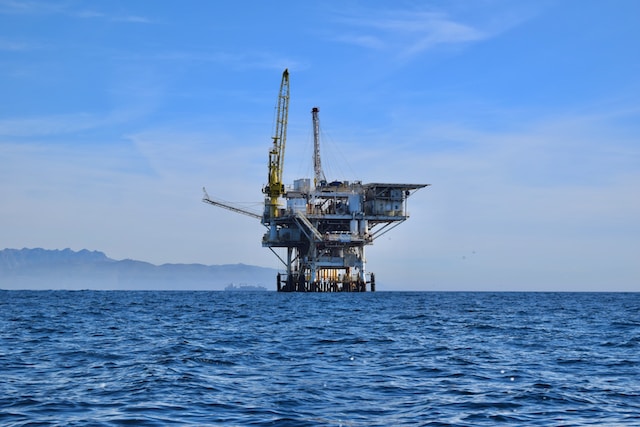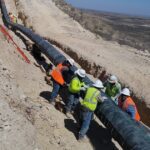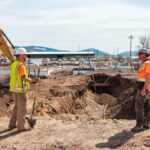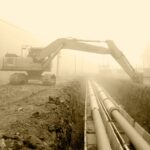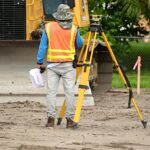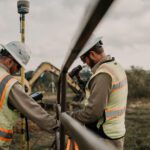ROVs, or unmanned, remote-controlled submersibles, are instrumental in carrying out complex tasks under challenging marine conditions, significantly enhancing the safety, efficiency, and quality of underwater inspections in the oil and gas industry.
ROV pipeline surveys have significant advantages of ROV over human divers, and the technology, when combined with numerous other professionals and their expertise, leads to a more efficient, safe survey conduction.
ROVs facilitate proactive maintenance and enhance the longevity and sustainability of operations, and have transformed the oil and gas industry.
What is an ROV Pipeline Survey?
An ROV pipeline survey is an inspection procedure for underwater pipelines using remotely operated vehicles. These unmanned, remote-controlled submersibles are essential for maintaining and assessing the integrity of subsea infrastructures, which are often located at significant depths and in environments that can be hazardous or inaccessible to humans.
The main objective of an ROV pipeline survey is to monitor the condition of underwater pipelines, detect potential issues, and determine necessary maintenance or repair actions.
During such a survey, the ROV is equipped with various specialized tools, including high-definition cameras, sonar systems, laser scanners, and other sensors. These instruments allow the ROV to capture high-resolution visual data and accurate measurements, enabling detailed pipeline integrity analysis.
Moreover, ROV pipeline surveys can detect leaks, corrosion, structural damage, and blockages. Such preemptive identification of potential problems is crucial for maintaining these pipelines’ overall health and longevity.
ROV pipeline surveys provide a safe, efficient, and highly effective method for inspecting underwater pipelines, thereby playing a crucial role in the sustainability of operations within the oil and gas industry.
What Does ROV Refer to in a Pipeline Inspection?
ROV stands for Remotely Operated Vehicle, a crucial tool in underwater pipeline inspections. It is an unmanned submersible remotely controlled by operators on a surface vessel or platform. It is used for conducting in-depth inspections and maintenance activities on underwater pipelines, often located at great depths and in challenging conditions where human intervention is risky or impossible.
The ROV has various specialized tools and instruments that allow for visual inspection, measurement of corrosion levels, detection of leaks or structural abnormalities, and sometimes the execution of minor repair works.
During a pipeline inspection, an ROV provides the operators with real-time, high-resolution video and data feedback. This information assesses the pipeline’s condition, identifies potential issues such as cracks, corrosion, or blockages, and determines the necessary corrective actions.
The advantage of using an ROV for pipeline inspection is its ability to operate in extreme depths and harsh conditions for prolonged periods, reducing risks to human divers and providing a safer, more efficient, cost-effective inspection solution.
What is the Process of an ROV Pipeline Survey?
An ROV pipeline survey is a meticulous process involving several stages to ensure accurate data collection and assessment. Here’s a general overview of this process:
Pre-Survey Planning
This stage involves mapping out the survey route, setting out the objectives, and determining the specific equipment needed based on the pipeline’s depth, environmental conditions, and the information required.
Deployment
The ROV, controlled from a surface vessel, is launched into the water. An umbilical cord that transmits power, control commands, and data between the ROV and the operators is tethered to the control station.
Inspection
The ROV navigates along the pipeline, capturing high-definition video and collecting data through various sensors. Depending on the survey’s objective, this could include sonar scans, cathodic protection measurements, 3D laser scans, and others.
Data Analysis
The data collected is processed and analyzed. Anomalies, such as leaks, corrosion, and physical damage, are identified, and their locations are noted.
Reporting
A detailed report is prepared outlining the survey findings. It includes any detected issues, their severity, and recommendations for repairs or further inspections.
Follow-up Actions
Based on the report, necessary maintenance or repair actions are planned and executed to maintain the pipeline’s integrity and functionality.
The overall process of an ROV pipeline survey, thus, facilitates thorough pipeline management, ensuring longevity, safety, and efficiency in operations.
How Long Does an ROV Pipeline Survey Generally Take?
The duration of an ROV pipeline survey varies greatly depending on several factors. These include the pipeline’s length and depth, the surrounding environment’s complexity, the survey’s specific objectives, the type of equipment used, and the level of detail required in the inspection.
The survey could be completed in a day or two for a simple visual inspection of a short, relatively shallow pipeline in a benign environment. However, for comprehensive inspections involving advanced sensor technologies (like sonar imaging, laser scanning, and corrosion measurement) on long, deep-sea pipelines in complex environments, the process could take several days to weeks.
Furthermore, it’s important to note that the time taken for data analysis and report generation can also be significant, particularly for detailed surveys. This phase involves processing large amounts of data, identifying and classifying anomalies, and preparing detailed documentation.
While the in-water operation of the ROV might be completed in a certain timeframe, the full survey process, from pre-survey planning to the execution of follow-up actions based on the survey results, can extend over a much longer period. Therefore, considering all these factors, it’s crucial to have a well-planned timeline.
Why Are ROV Pipeline Surveys Useful?
ROV pipeline surveys are crucial for several reasons, offering many benefits in subsea pipeline inspection and maintenance.
Safety
ROVs eliminate the need for human divers to perform hazardous tasks in challenging and often unpredictable underwater environments, thereby minimizing the risk of injury or loss of life.
Accessibility
ROVs can reach depths and navigate conditions inaccessible to human divers, such as deep-sea pipelines or those in high-pressure, low-temperature, or low-visibility environments.
Efficiency and Cost-Effectiveness
Unlike human-crewed operations, ROVs can operate continuously over long periods without breaks, thus reducing the time and cost associated with subsea inspections.
Data Quality
Equipped with a wide array of sensors and tools, ROVs provide high-resolution visual data and accurate measurements, enabling detailed pipeline integrity analysis.
Versatility
They can carry out various tasks, from simple visual inspections to more complex tasks like cleaning, debris removal, and minor repairs.
Proactive Maintenance
Regular ROV surveys help in the early detection of issues such as corrosion, leaks, and structural deformities, allowing for timely remedial actions and preventing costly major repairs or disastrous failures.
By offering these advantages, ROV pipeline surveys prove to be an indispensable tool in maintaining the health of underwater pipelines, ultimately enhancing their longevity and the sustainability of operations.
Who is Involved in ROV Pipeline Surveys?
Several key players are involved in conducting an ROV pipeline survey, each contributing their expertise to ensure a successful operation:
ROV Operators/Pilots
They control the ROV from the surface vessel, navigating it along the pipeline for inspection. Their skills are crucial in handling the ROV’s maneuvers and operating its inspection tools.
Data Analysts
These professionals process and analyze the data collected during the survey. They identify and assess anomalies like leaks, corrosion, and structural damage.
Project Managers
Project managers oversee the entire operation, from pre-survey planning to final reporting, ensuring that objectives are met within budget and time constraints.
Engineers
Various engineers are involved, including subsea engineers who help in the planning and execution of the survey, mechanical engineers responsible for the ROV and its equipment, and pipeline engineers who interpret the findings relative to the pipeline’s integrity.
Technicians
These individuals maintain and repair the ROV and its equipment, ensuring it’s in optimal condition for the survey.
HSE Specialists
Health, Safety, and Environment (HSE) specialists ensure that all operations follow safety and environmental regulations.
Clients/Stakeholders
Stakeholders in an ROV pipeline survey could be oil and gas companies, pipeline owners, or regulatory authorities who commission the survey. They use the survey results to make informed decisions about pipeline maintenance or repairs.
Marine Crews
ROV surveys rely on marine crews, or personnel on the surface vessel who support ROV deployment, recovery, and other on-deck operations.
These individuals, working together as a cohesive unit, contribute to the effective execution of an ROV pipeline survey.
FAQs
What is the meaning of ROV in oil and gas?
In the oil and gas industry, ROVs (Remotely Operated Vehicles) play an essential role in the inspection, maintenance, and repair of offshore structures and subsea pipelines. These unmanned, remote-controlled submersibles can operate in deep-sea, high-pressure environments that are hazardous or inaccessible for human divers.
They provide high-quality visual data and precise measurements, facilitating early detection of potential problems such as leaks or structural damage, thus ensuring the safety and sustainability of oil and gas operations.
What does an ROV stand for?
ROV stands for “Remotely Operated Vehicle.” It refers to a robotic device controlled from a distance without a human operator onboard. ROVs are typically used for applications requiring operations in hazardous, inaccessible, or impractical environments for humans.
What does ROV mean for pipelines?
ROVs (Remotely Operated Vehicles) provide significant benefits for pipeline operations. They enhance safety by eliminating the need for human divers to perform risky tasks in challenging underwater environments.
ROVs also improve efficiency and cost-effectiveness by enabling continuous operation over extended periods, while their advanced sensors and tools ensure accurate data collection for proactive maintenance, timely repairs, and prevention of major failures in pipeline systems.
Final Thoughts
Remotely Operated Vehicles (ROVs) have significantly revolutionized underwater pipeline inspections in the oil and gas sector. With their ability to access challenging environments and deliver high-quality data, they’ve become integral tools in ensuring pipeline operations’ safety, efficiency, and reliability.
The process of ROV pipeline surveys is complex and requires meticulous planning and execution involving a multidisciplinary team of experts.
While the duration of these surveys can vary greatly based on multiple factors, their utility and significance in preempting potential issues and facilitating timely maintenance and repair operations is undeniable.
The advent of ROVs has led to a reduction in human risk and an increase in operational productivity, providing invaluable benefits to the industry. Furthermore, their versatility allows their application in diverse tasks beyond pipeline inspections.
As pipeline inspection technology continues to evolve, we can anticipate further advancements in ROV capabilities, further enhancing our ability to manage and maintain the world’s vast network of underwater pipelines.
